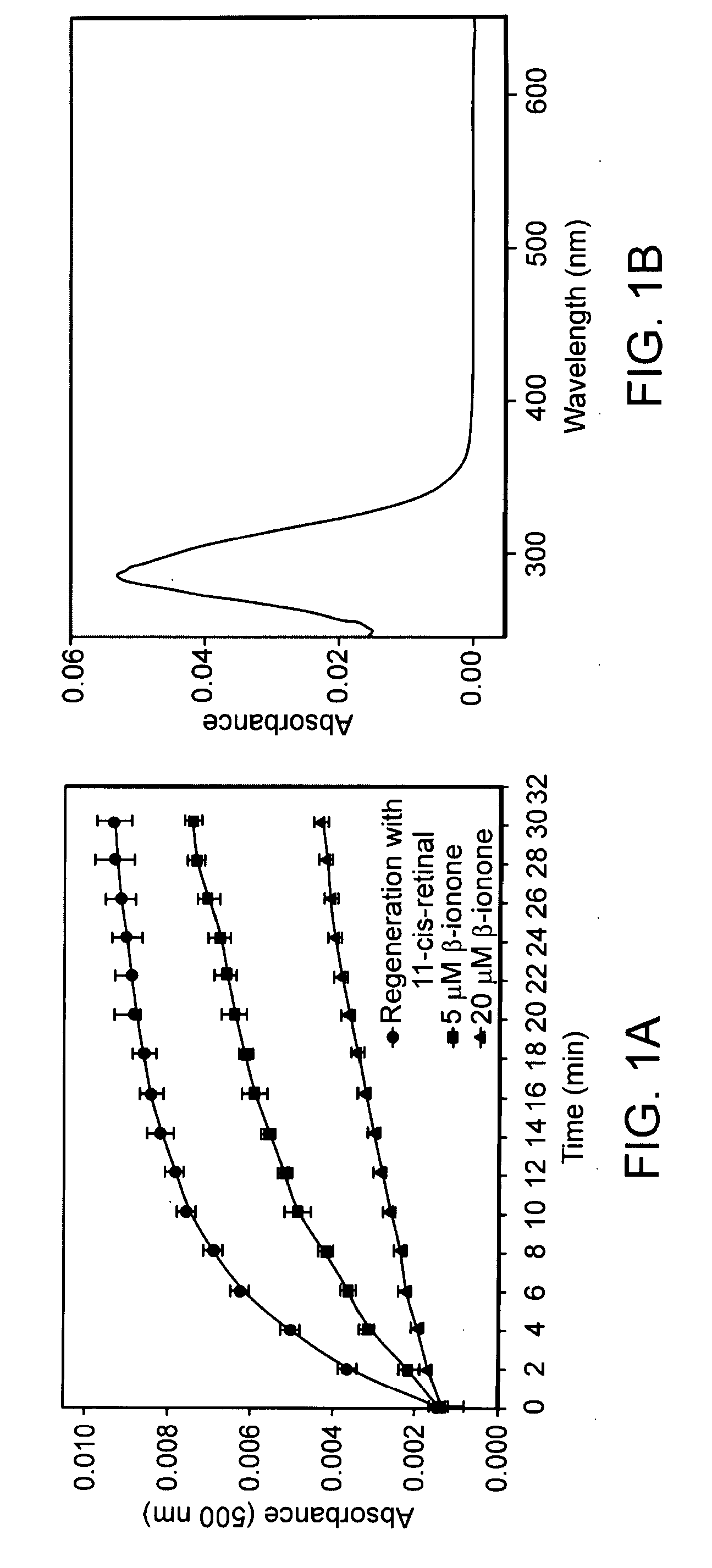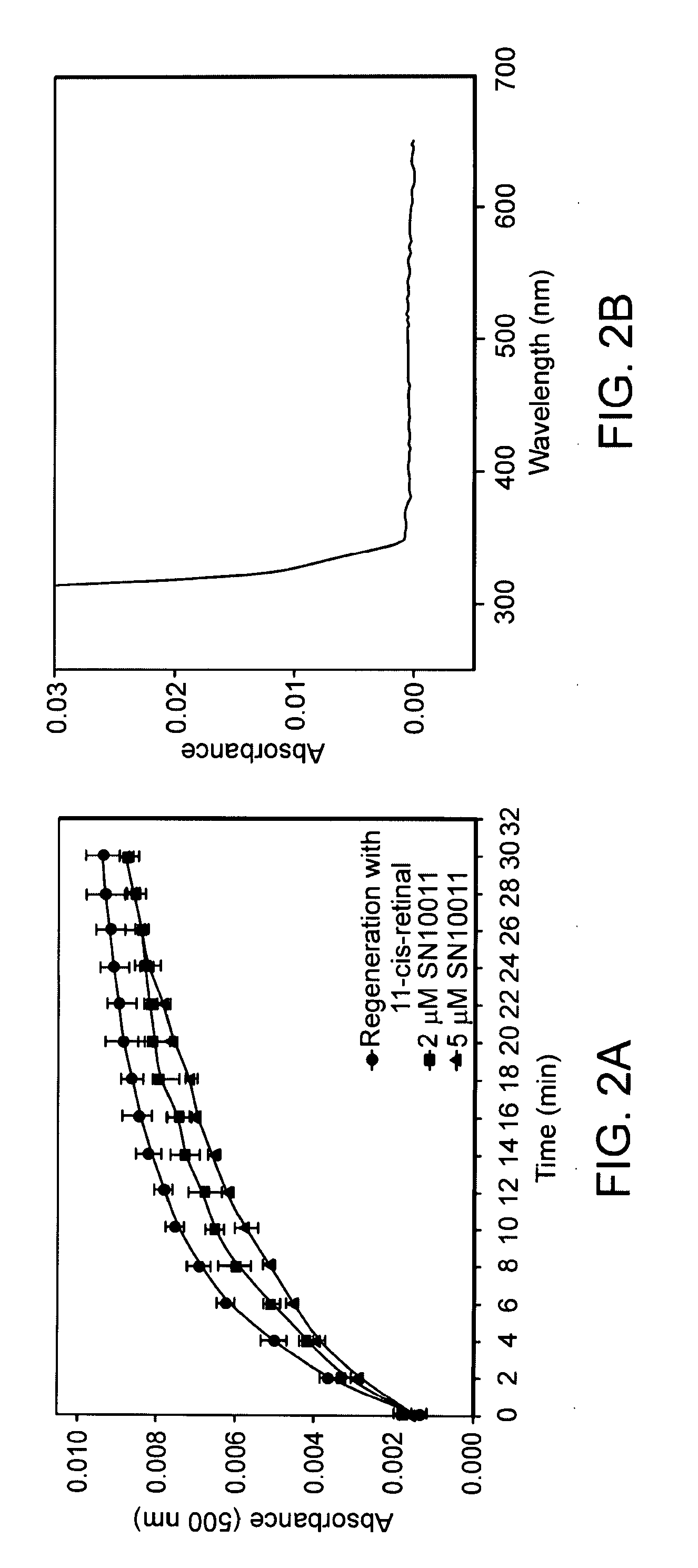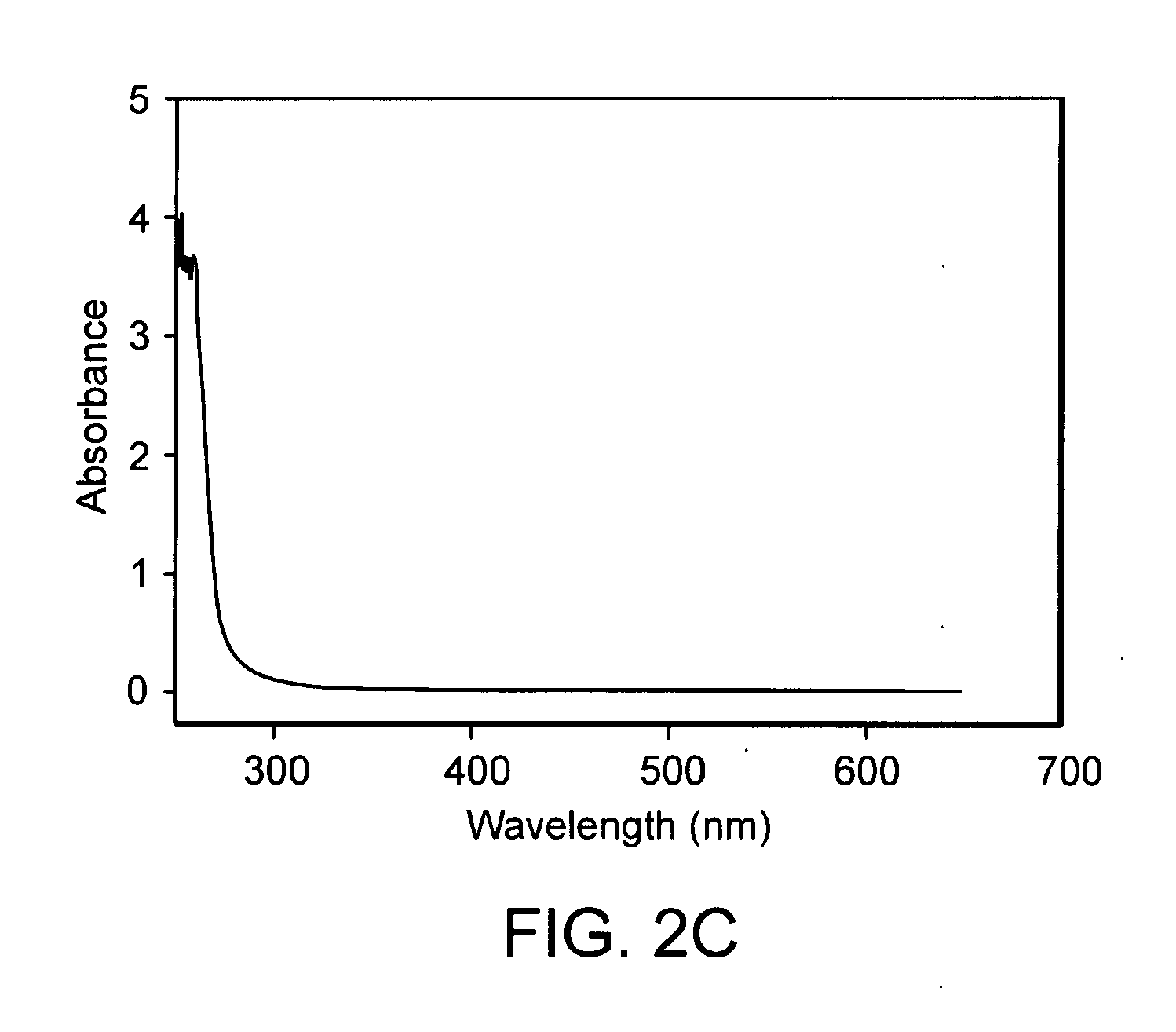Compositions and Methods for Treating or Preventing Ophthalmic Light Toxicity
a technology of ophthalmic light and compound, applied in the field of compounding agents, can solve the problems of ophthalmic, a2e can also prove toxic to the rpe, visual, ophthalmic, etc., and achieve the effects of reducing light toxicity, reducing light toxicity, and reducing light toxicity
- Summary
- Abstract
- Description
- Claims
- Application Information
AI Technical Summary
Benefits of technology
Problems solved by technology
Method used
Image
Examples
example 1
Use of a Crystal Structure of Rhodopsin To Select Potential Modulators
[0146]The retinal binding pocket of a trigonal crystal form of bovine rhodopsin, PDB code 1 GZM, was used to identify small molecule modulators by a high throughput molecular docking method. The positions of each retinal atom were used to guide in the definition of the binding pocket selected for molecular docking.
[0147]Spheres were positioned at the selected site to allow the molecular docking program, DOCK 5. 1.0 (available from USCF), to match spheres with atoms in potential ligands (small molecules in this case). During the molecular docking calculation, orientations are sampled to match the largest number of spheres to potential ligand atoms, looking for the low energy structures that bind tightly to the active site of a receptor or enzyme whose active site structure is known.
[0148]A scoring grid was calculated to estimate the interaction between potential ligands and the retinal binding pocket target site. T...
example 2
Effect of β-Ionone on Opsin-Binding of 11-cis-Retinal
[0157]The structure of β-ionone is as follows:
[0158]As shown in FIG. 1, to determine whether a 500 nm absorbing pigment is formed upon addition of β-ionone, purified wt (wild-type) opsin was mixed with β-ionone, incubated for 15 minutes, and scanned for pigment formation. β-ionone does not form a light absorbing pigment with opsin.
[0159]Here we have demonstrated that smaller molecules, e.g., β-ionone, that non-covalently bind to the chromophore binding site of opsin, inhibit binding of retinal to the site and thereby reduce formation of visual cycle products, such as all-trans-retinal. Similar results have been found for cis-1,3-dimethylcyclohexane. It is important to note that these compounds are non-retinoids. We have utilized a high-throughput computer-based molecular docking approach that made use of the coordinates of the retinal binding site coupled with functional studies in vitro and in vivo to identify 1-(3,5-dimethyl-1H-...
example 3
Effect of SN10011 on Opsin Regeneration
[0161]To identify non-retinoid compounds that are useful therapeutic agents, we performed molecular docking using a large chemical library of drug-like small molecules in the National Cancer Institute Developmental Therapeutics Program. DOCK 5.1.0 (UCSF) was used to position each one of 20,000 drug-like compounds into the selected site. Each compound was positioned in 100 different orientations, and the best scoring orientations were obtained, Unlike previous molecular docking strategies, each docked compound was selected based on chemical criteria (for example, the Lipinski rules for drug likeness). Therefore, this strategy eliminates compounds that are less likely to be developed into therapeutic agents. FIG. 3C shows results with the 5th highest scoring compound, 1-(3,5-dimethyl-1-H-pyrazol-4-yl)ethanone, SN10011, in the orientation posed by DOCK 5.1.0 (UCSF) at the retinal binding pocket based on the crystal structure of rhodopsin. Compound...
PUM
| Property | Measurement | Unit |
|---|---|---|
| Toxicity | aaaaa | aaaaa |
| Covalent bond | aaaaa | aaaaa |
Abstract
Description
Claims
Application Information
 Login to view more
Login to view more - R&D Engineer
- R&D Manager
- IP Professional
- Industry Leading Data Capabilities
- Powerful AI technology
- Patent DNA Extraction
Browse by: Latest US Patents, China's latest patents, Technical Efficacy Thesaurus, Application Domain, Technology Topic.
© 2024 PatSnap. All rights reserved.Legal|Privacy policy|Modern Slavery Act Transparency Statement|Sitemap



